First of all, I am a lazy person 
So my retro PCs must match these requirements:
so here we go:
Retro PC#1 built in a SilentMAXX ATX case:
CPU
Mainboard:
Hard disks:
CD-ROM:
Graphics:
3Dfx:
Sound card #1:
Sound card #2:
Sound card #3:
Sound card #4:
Images:
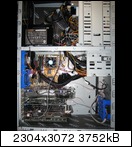
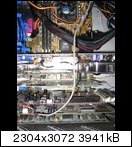
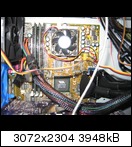
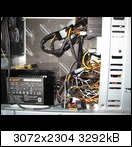
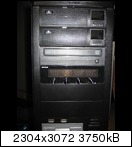
Retro PC#2 built in a Proline AT case:
CPU
Mainboard:
Hard disk:
CD-ROM:
Graphics:
Sound card #1:
Sound card #2:
Sound card #3:
Sound card #4:
Images:
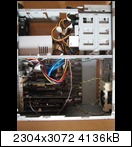
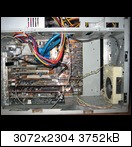
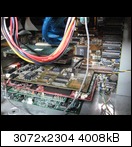
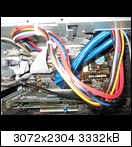
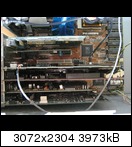
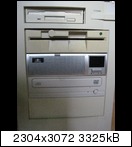
MIDI-Rack:
Image:
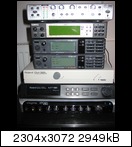
So how are they connected:
KVM:
Plasma TV:
MIDI:
Sound:
Images: (first image shows main PC to the left)
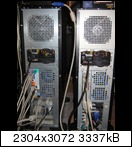
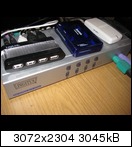
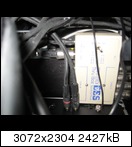
Work in progress:
Retro PC#3 built in a Proline AT case:
CPU
Mainboard:
Hard disk controller (bought, not delivered yet):
Hard disk:
CD-ROM:
Graphics:
Sound card #1:
Sound card #2:
Sound card #3 (still looking):
Sound card #4:
So my retro PCs must match these requirements:
- only one set of input devices using a 4-port KVM
- in addition to the computer LCD screen, the Plasma TV must be connected via DVI resp. DVI-HDMI
- only one main sound control unit
- midi rack must be switched dynamically without using midi-through
- always WIN98 SE as OS since it contains drivers for every hardware, in addition DOS 7.x has benefits like FAT32 and >2GB partitions
- silent but with sufficient cooling
- no slowdown software (messes around with joystick input processing etc.)
- no CF cards as HDD replacement (Windows kills them with its I/O)
so here we go:
Retro PC#1 built in a SilentMAXX ATX case:
CPU
- AMD K6-III+ 400MHz, by default jumpered to 200MHz
- using K6DOS.SYS it can be switched dynamically between 133-400Mhz
Mainboard:
- DFI K6XV3+/66 with VIA MVP3 chipset and 128MB SDRAM
Hard disks:
- IBM DHEA 38451 8,4GB Ultra DMA
- IBM DHEA 36481 6,4GB Ultra DMA
- Using Vantec Vortex HDD cooler for cooling and noise reduction
CD-ROM:
- Toshiba Samsung DVD-ROM Drive SH-D162
- Allows software speed-down and has great CD-R / DVD-R compatibility
Graphics:
- NVidia Geforce4 Ti 4600, likes DOS thanks to VBE 3.0 and has enough power for Direct3D in Windows
- Last NVidia AGP generation which fits the DFI board (AGP 3.3V)
- GPU cooler is a NVSilencer V1
3Dfx:
- Diamond Monster 3D Voodoo1 for 100% GLIDE compatibility
- Voodoo2 has too much issues with first generation of GLIDE games
Sound card #1:
- Sound Blaster AWE64 Gold, best "quality" and compatibility
- S/PDIF output for recording FM and EMU-8000 midi game music
Sound card #2:
- Gravis Ultrasound PNP Pro, best of all Ultrasound cards with 512K Onboard RAM and additional 2MB SIMM
- Unneccessary ressources like gameport, blaster emulation, midi are deactivated to spare ports, IRQs and DMAs
Sound card #3:
- Roland SCC-1 for providing MPU401 output only
Sound card #4:
- Sound Blaster Live 5.1 incl. LiveDriveII for Windows game (EAX, too)
Images:





Retro PC#2 built in a Proline AT case:
CPU
- Intel 486DX2-66Mhz
Mainboard:
- Asus 486SP3 with SiS Chipsatz and 64MB FPM RAM
Hard disk:
- IBM DHEA 36481 6,4GB, yet the board has no Ultra DMA support
- Using Vantec Vortex HDD cooler for cooling and noise reduction
CD-ROM:
- Toshiba Samsung DVD-ROM Drive SH-D162
- Allows software speed-down and has great CD-R / DVD-R compatibility
Graphics:
- Matrox Mystique 220, likes DOS thanks to VBE 2.0 and 4MB video memory allows higher resolutions in Windows
Sound card #1:
- Sound Blaster AWE64 Gold, best "quality" and compatibility
- S/PDIF output for recording FM and EMU-8000 midi game music
Sound card #2:
- Gravis Ultrasound PNP Pro, best of all Ultrasound cards with 512K Onboard RAM and additional 2MB SIMM
- Unneccessary ressources like gameport, blaster emulation, midi are deactivated to spare ports, IRQs and DMAs
Sound card #3:
- MediaVision Pro Audio Spectrum 16 for native PAS support
Sound card #4:
- Roland MPU-IPC-T for providing MPU401 output only
Images:






MIDI-Rack:
- Yamaha MU-50 for XG support
- Roland SC-55 for GS / General MIDI support
- Roland SC-55mkII for GS / General MIDI support (deactivated since it has no more "fallback instrument" capability in contrast to the SC-55)
- Roland CM-32L for 100% LAPC-I support
- Roland MT-32 for old Sierra games support (CM-32L sounds different)
Image:

So how are they connected:
KVM:
- Input devices are PS/2 Microsoft Wireless Desktop Elite keyboard and mouse
- LCD monitor Samsung Syncmaster 960BF
-> unfortunately a 5:4 LCD, but I'm looking for a 4:3 right now - Retro PC#1 loops VGA output of the Geforce through the Monster 3D, no problem thanks to high quality loop cable
- VGA signal will be converted to DVI using a ATEN VGA-DVI converter
Plasma TV:
- Retro PC#1 has thanks to dual view direct DVI-HDMI connection
- Retro PC#2 only has one VGA port so I have to manually switch between KVM and Plasma TV
MIDI:
- MIDI Through is bad because it adds 10ms per device and each device must be powered on.
- That's why I use a EES MIDI Thru Box which provides up to 8 MIDI devices to two different inputs
Sound:
- MIDI Rack is attached to a Behringer MiniMon Mixer angeschlossen, providing 4 separate inputs
- Behringer Mixer Line-Out goes to the AUX-In of the Sound Blaster X-Fi Elite Pro Breakout Box connected to my main PC
- Both retro PCs are connected to the Line-In of the Sound Blaster X-Fi Elite Pro in my main PC
- Retro PC#1 connects GUS output to the Line-In of the AWE64 Gold
- Retro PC#2 connects GUS output to the Line-In of the AWE64 Gold, alternatively the output of the PAS16
Images: (first image shows main PC to the left)



Work in progress:
Retro PC#3 built in a Proline AT case:
CPU
- Intel 386DX-40 CPU @33Mhz
- Cyrix 387 coprocessor
Mainboard:
- Robotech GMB-386UMC with UMC Chipsatz and 32MB RAM
Hard disk controller (bought, not delivered yet):
- Promise EIDEMAX
- Promise EIDEMAXX II
Hard disk:
- IBM DHEA 36481 6,4GB, yet the board has no Ultra DMA support
- Using Vantec Vortex HDD cooler for cooling and noise reduction
CD-ROM:
- Toshiba Samsung DVD-ROM Drive SH-D162
- Allows software speed-down and has great CD-R / DVD-R compatibility
Graphics:
- Orchid Kelvin 64 (CL-5434) 1MB
Sound card #1:
- Sound Blaster Pro CT1330 Rev. 6, compared to other SB Pro revision least noise and hiss
Sound card #2:
- Gravis Ultrasound MAX with 512K Onboard RAM
- Unneccessary ressources like gameport, blaster emulation, midi are deactivated to spare ports, IRQs and DMAs
Sound card #3 (still looking):
- MediaVision Pro Audio Spectrum (8 bit) for native PAS support
Sound card #4:
- Roland MPU-IPC-T for providing MPU401 output only
Last edited:

